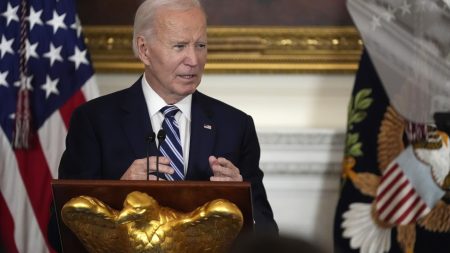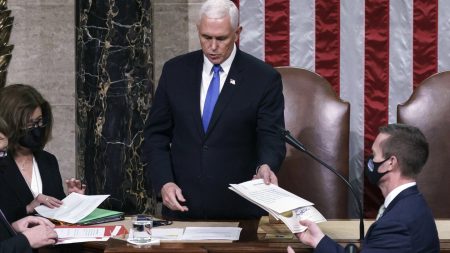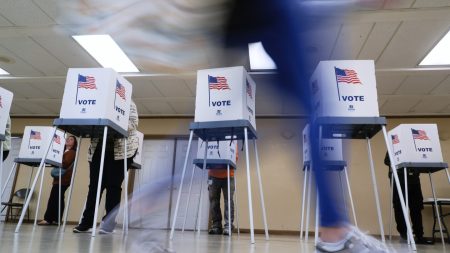A recent survey conducted by The Associated Press-NORC Center for Public Affairs Research reveals that Ohio Senator JD Vance, the Republican vice presidential candidate, is less popular among voters compared to his Democratic rival, Minnesota Governor Tim Walz. Both Vance and Walz emerged as relative political unknowns this summer as they gear up to address a large audience in the upcoming vice-presidential debate. The survey indicates that Democrats have a more positive view of Walz and Vice President Kamala Harris, while Republicans are less favorable towards Vance and former President Donald Trump.
Negative sentiments towards Vance are more widespread among registered voters compared to positive opinions. Approximately half of registered voters hold a somewhat or very unfavorable view of Vance, while only about a quarter have a somewhat or very favorable view, with a similar proportion indicating they do not know enough to form an opinion. On the other hand, Walz is viewed more positively, with around three in ten voters having a negative view, four in ten holding a positive opinion, and three in ten lacking enough information to make a judgment.
When examining the candidates’ support bases, it is evident that Walz has an edge over Vance. Approximately 70% of Democratic voters have a positive opinion of Walz, while only about 60% of Republican voters hold a favorable view of Vance. Furthermore, Walz manages to appeal to both men and women, garnering similar levels of popularity among both genders, contrasting the typical partisan split where Democratic candidates tend to fare better among women and Republicans among men.
Despite the positive reception for Walz, there are certain demographics where he needs to focus on improving his favorability, such as among Black voters and women. While three-quarters of Black adults have a favorable view of Harris, only about half express the same sentiment towards Walz. Similarly, Harris is viewed more positively by women compared to Walz, highlighting areas where the Democratic candidate can enhance his support among key demographic groups. Overall, neither vice-presidential candidate surpasses the popularity of Harris or Trump among major demographic segments, and they continue to be less recognized than the presidential nominees.
The survey, which polled 1,771 registered voters from Sept. 12-16, 2024, utilized a sample drawn from NORC’s probability-based AmeriSpeak Panel to ensure representativeness of the U.S. population. The margin of sampling error for registered voters is plus or minus 3.4 percentage points, reflecting the credibility and reliability of the findings. As voting commences in various states, the results signal the challenge faced by the Republican presidential ticket, with Vance trailing behind his Democratic counterpart in terms of voter popularity. The upcoming vice-presidential debate presents an opportunity for both candidates to further engage with the electorate and bolster their standing as the campaign heats up.















